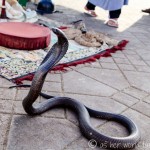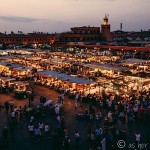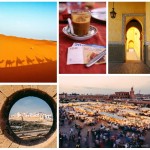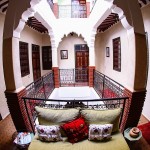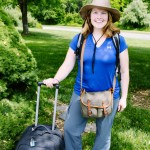While our tour began in Marrakech nearly two weeks ago, today is the first time we’ll explore the city. I’ve heard only fantastic things and can’t wait.
Here is our room at the Hotel Imilchil, probably my least favorite of the trip but still nothing to complain about.
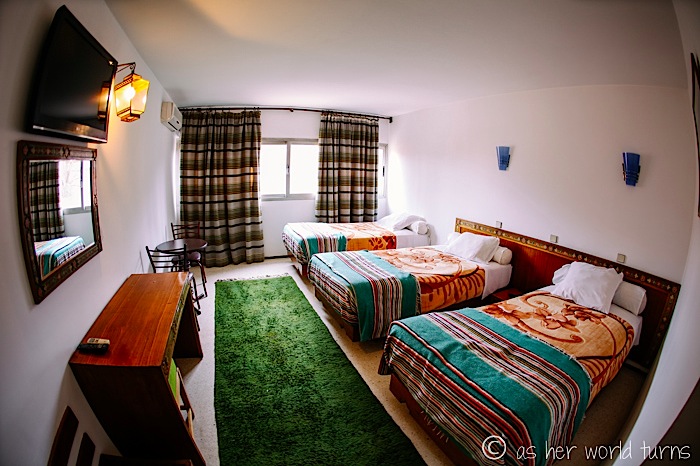
Our 15-minute walk to the main square (called Jemaa el-Fnaa) is a pleasant one along these walls.

Koutoubia mosque borders the main square, its tower a prominent landmark in this highly photographed area.

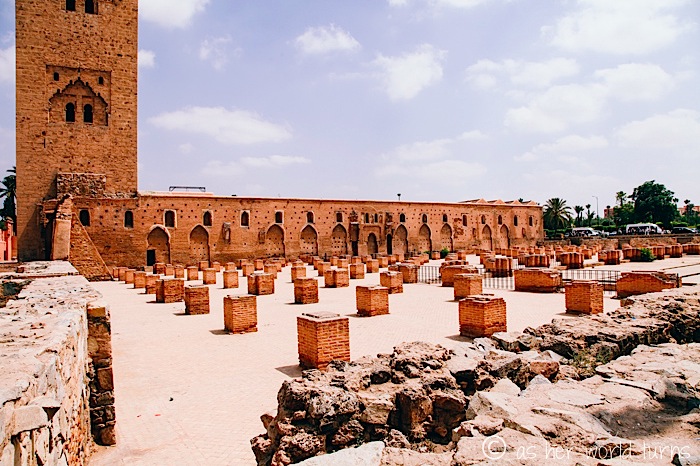
Our guide Mohamed takes us around the outskirts of the souks en route to a historic site, but we still get a taste of what’s in store for us when we return to Jemaa el-Fnaa later this afternoon.
This young man pushes a cherry cart through the crowds. Remarkably, he doesn’t seem to lose any of the fruit as he navigates narrow lanes and tight corners.

There are colorful goods for sale left and right. I snap photos as we walk, careful not to offend any shopkeepers by either being stealthy or nodding to ask permission before pressing the shutter.


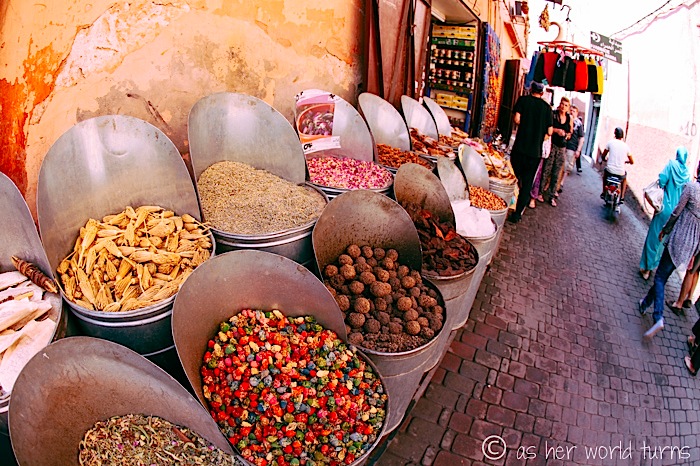

We arrive at Bahia Palace, whose name translates to “brilliance,” as it was intended to be the greatest palace of its time.
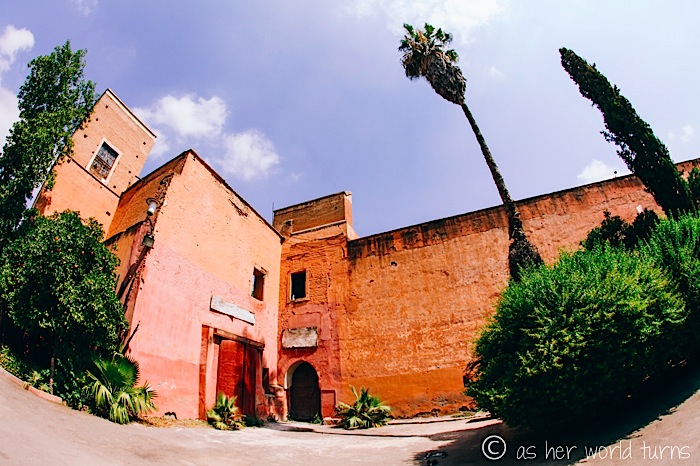
There are two acres worth of gardens and many of the rooms open into courtyards.
Mohamed guides us through the area, pointing out various features of the architecture and explaining the historical context of each room.


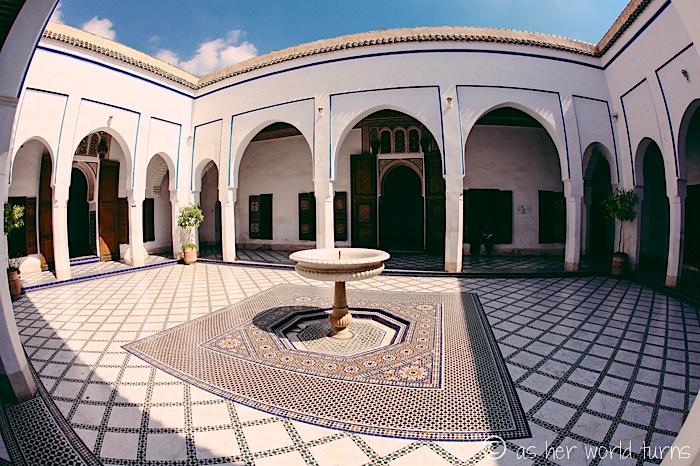

Aww, here’s our happy Mohamed:
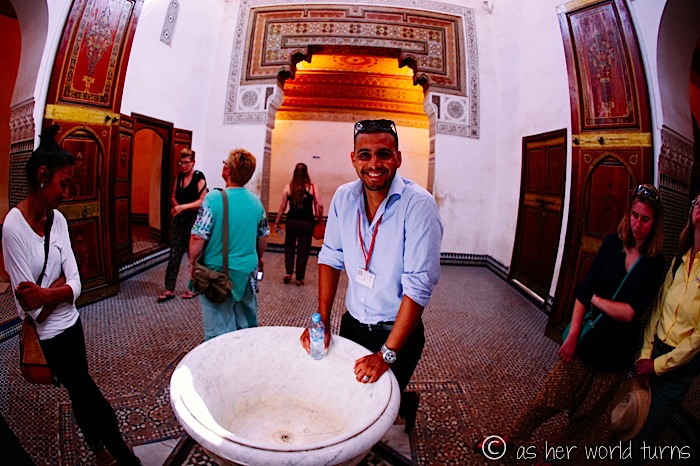
The engraved emblem on the door below is a Hamsa and it has religious significance across many cultures. In this part of the world it’s called the Hand of Fatima, referring to the daughter of the prophet Muhammad (our guide Mohamed explains that just as Mohamed is the most popular name for boys in the Arab world, Fatima is the female equivalent). Christians call it the Hand of Mary, for the Virgin Mary, and Jews refer to it as the Hand of Miriam in remembrance of the biblical Miriam, sister of Moses and Aaron. It’s a symbol of protection against evil. We see the Hand of Fatima in jewelry shops on necklaces, earrings, etc. and Mohamed very kindly gives everyone in our group a keychain with this symbol as a parting gift.
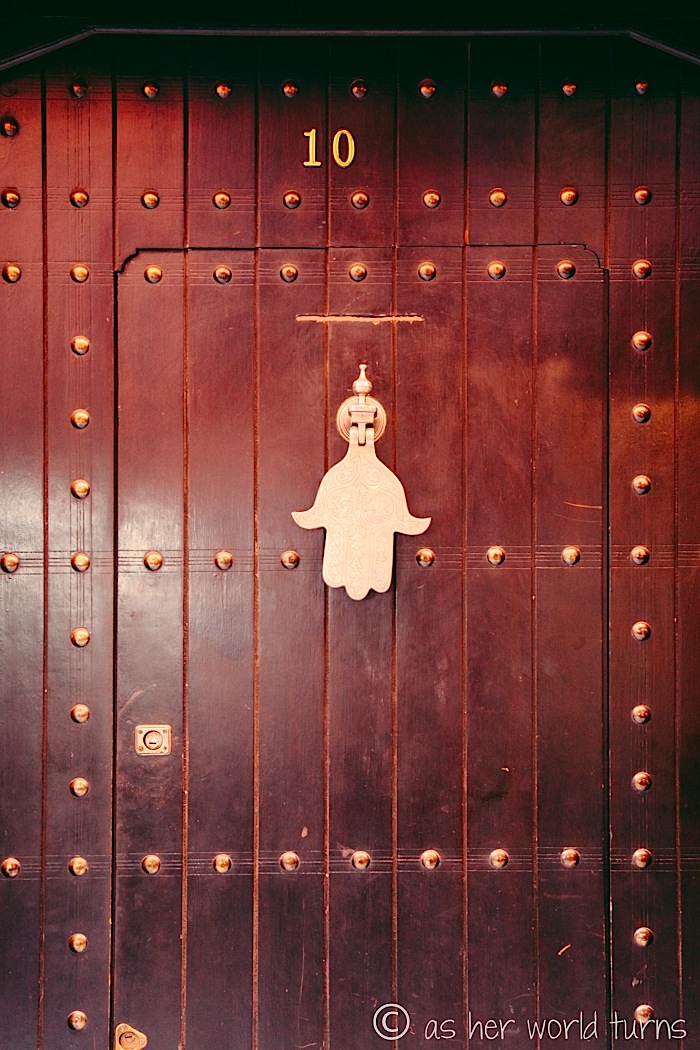
We return to the souks for a quick tour. It’s an expansive and impressive area — but perhaps its most noticeable feature is the way light streams in at specific points of the day, depending on the sun’s position. If the sun is directly overheard around 1pm, it’s probably best to visit around two hours on either side of that — so 11am or 3pm — to witness the slanted beams of light. It’s not noticeable in these next photos but you’ll see it further down.
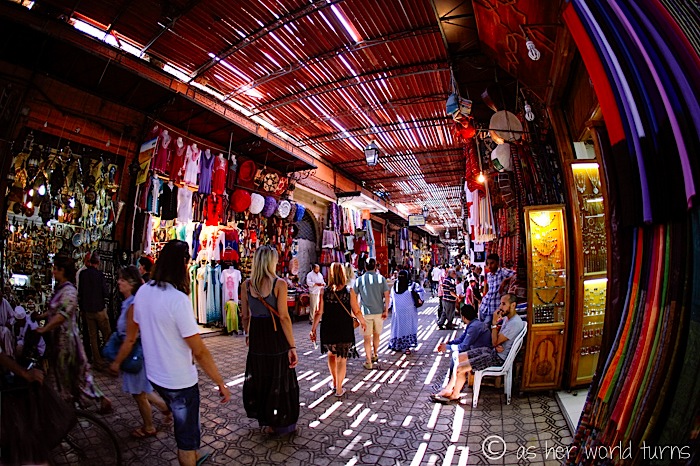
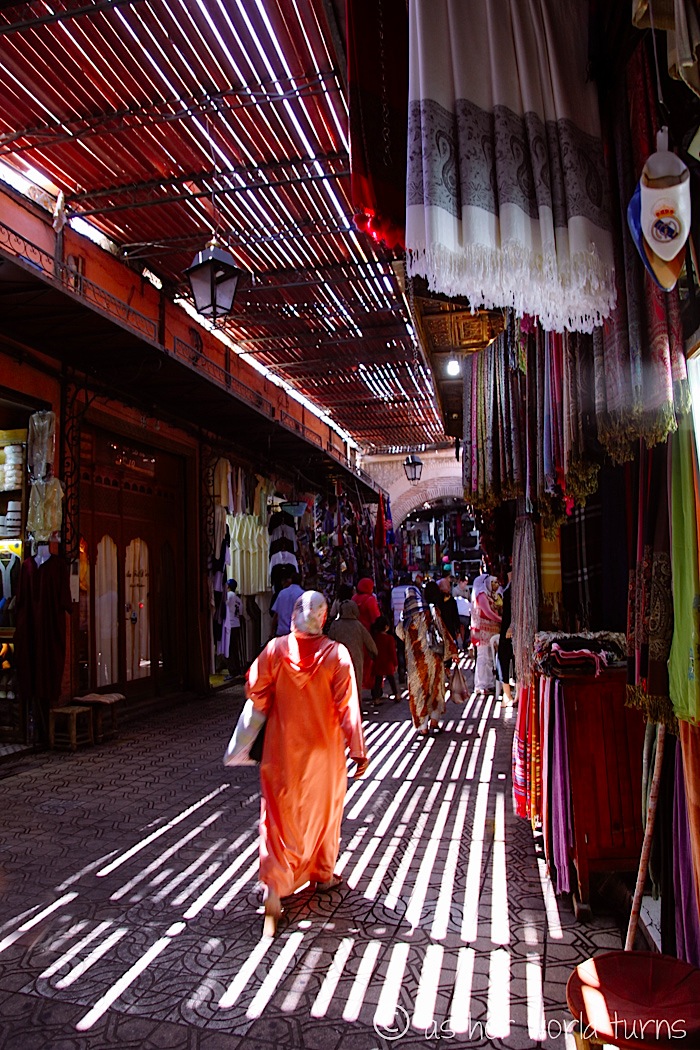
Olives are my favorite. I’m elated when Mohamed says we get to try some for free! Sure enough, the dude behind the counter lets us sample a few, even though we clearly have no intention of buying.
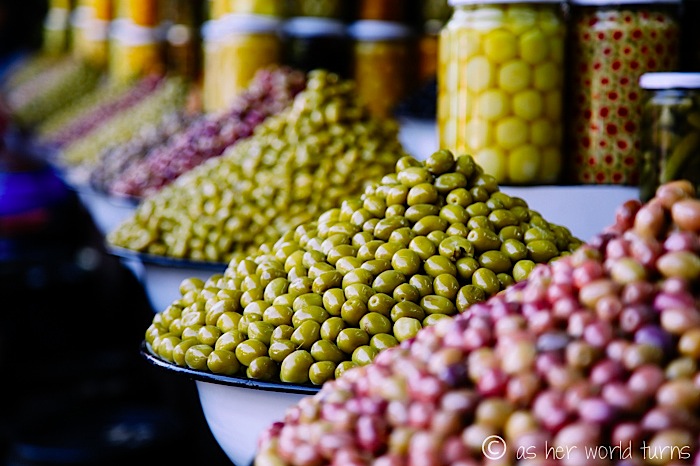

We turn a corner and I witness those iconic slanted beams of light… it’s breathtaking. This is the best example I see with my own eyes.
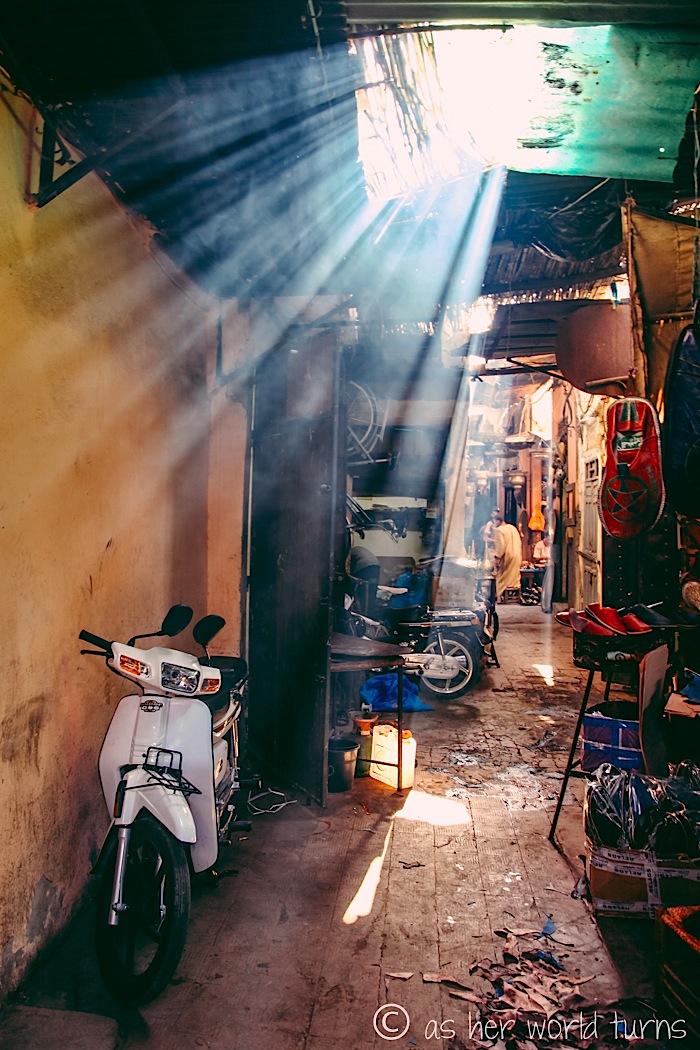
A table covered in old cameras! If I were the type of person to buy souvenirs — or if I were going straight home after Morocco — I would have purchased a bevy of these beauties for decorative purposes in a future apartment / home.
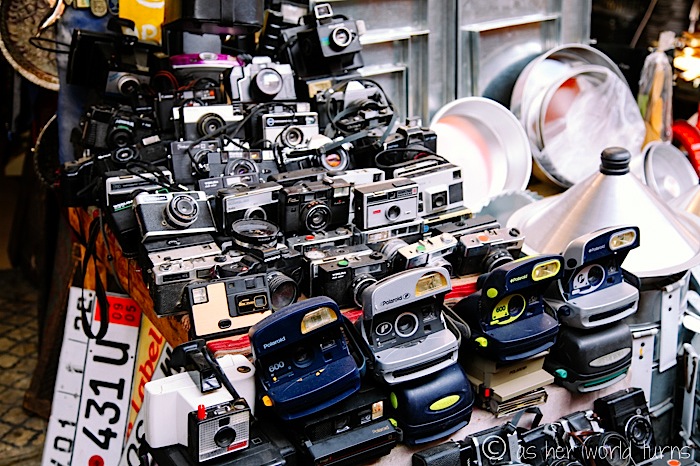
Two final shots from pretty alleys we traversed today:
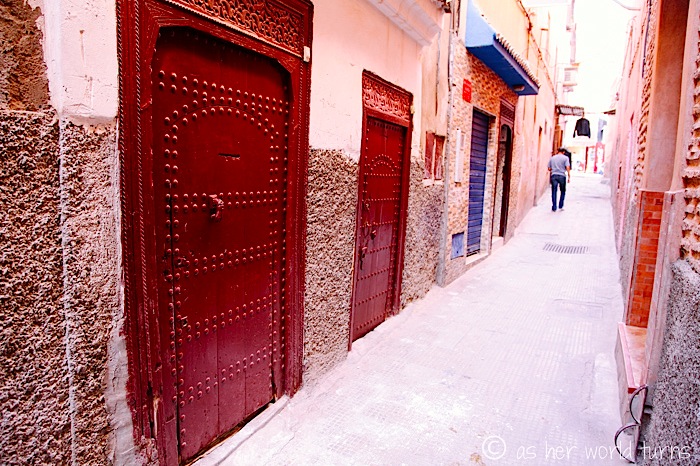
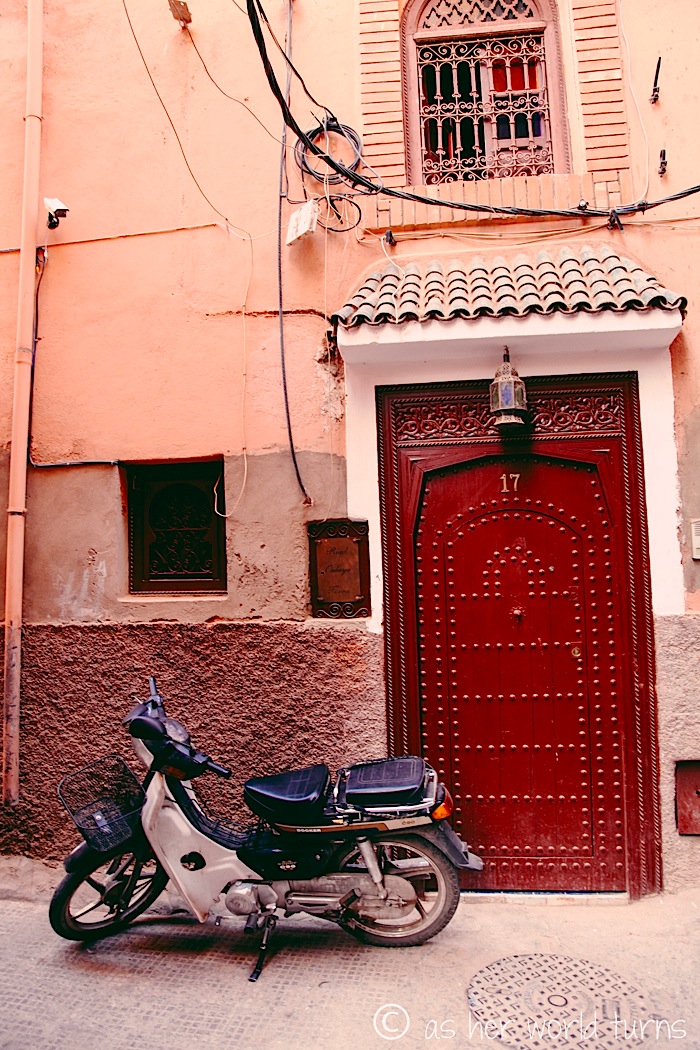
I’ll be back tomorrow with images from Jemaa el-Fnaa, the main square in Marrakech.
Thanks to Nomadic Tours for discounting my tour in exchange for photography and blogging. Opinions are my own.

